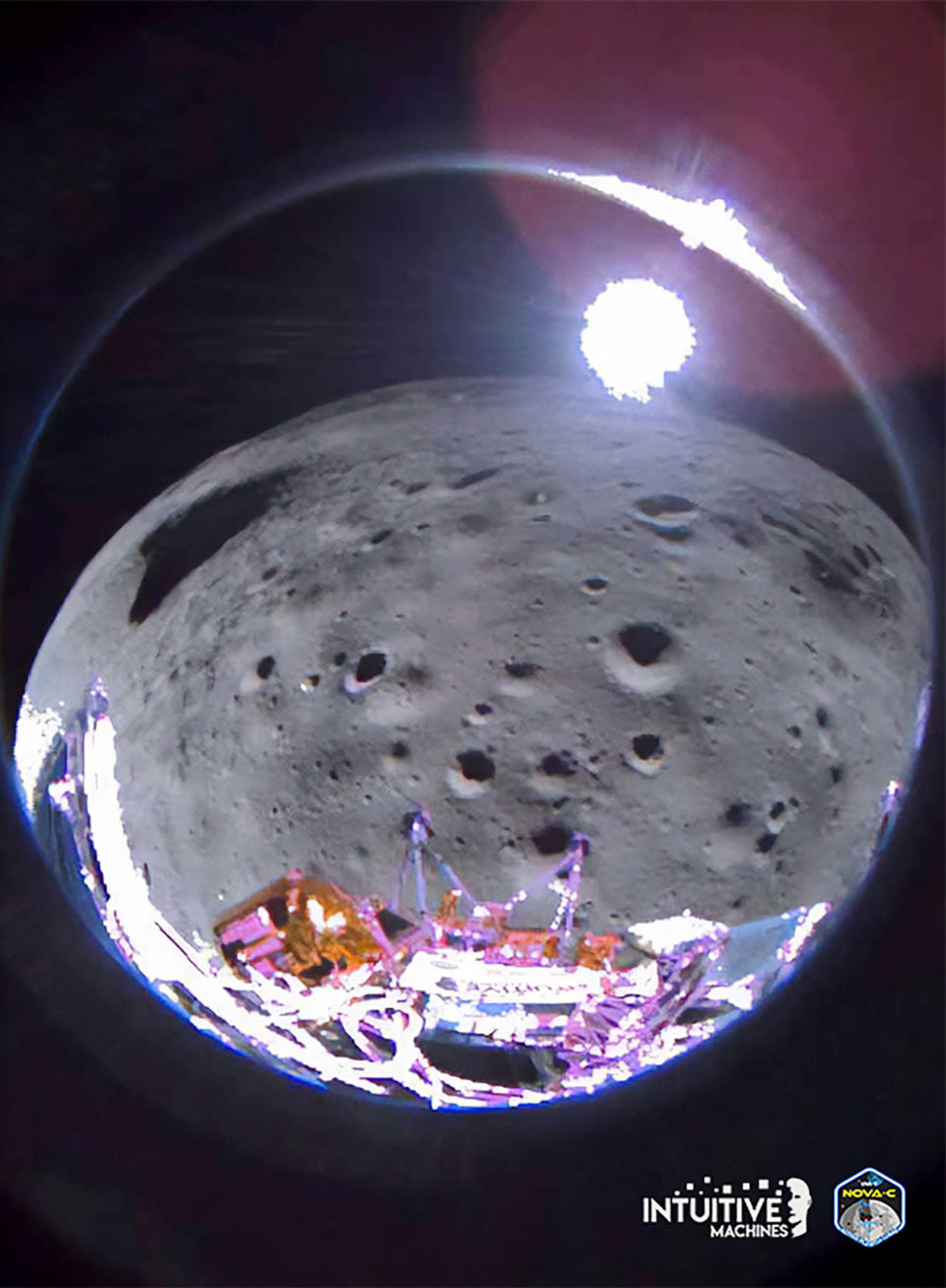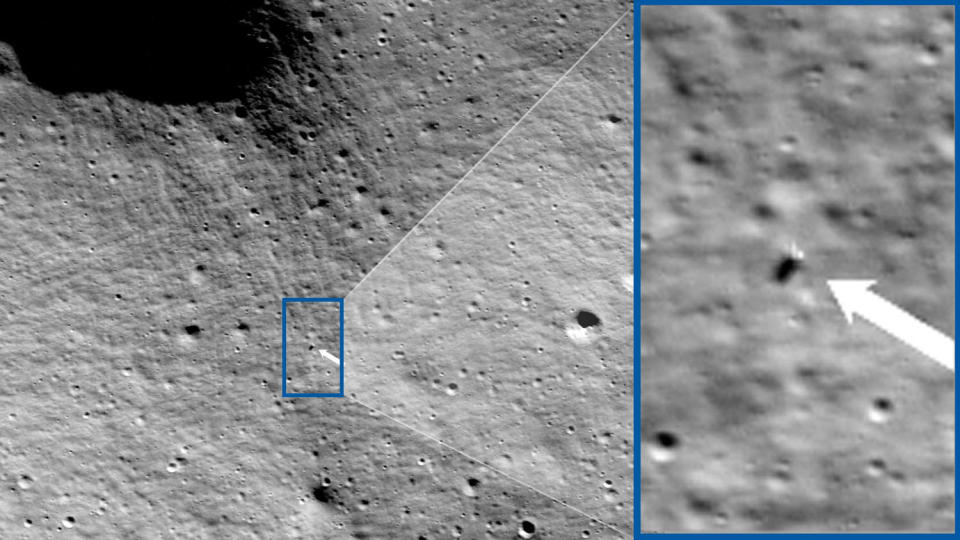Private lunar lander sends back first pics from its moon landing
A privately built spacecraft on the moon has beamed back new photos from the lunar surface, showing the vehicle’s much-celebrated descent and the moments immediately after touchdown when it tipped over on its side.
The Odysseus lander, built by Houston-based Intuitive Machines, landed on the moon on Feb. 22, making history as the first commercial craft to reach the lunar surface and the first U.S. spacecraft on the moon in more than 50 years.

The following day, Intuitive Machines said Odysseus had pitched over when it touched down near a crater called Malapert A, close to the moon’s south pole. Company officials said the 14-foot-tall lander was operational but that some of the spacecraft's antennas were pointing at the ground, limiting its ability to communicate with flight controllers back on Earth.
In an update Monday, Intuitive Machines said it continues to be in contact with the spacecraft, adding that flight controllers “intend to collect data until the lander’s solar panels are no longer exposed to light.”
Company officials said that based on the positions of Earth and the moon, they expect to be able to communicate with Odysseus until Tuesday morning. The lander was initially expected to spend about a week collecting data on the moon before lunar night sets in and the probe loses power.
On Tuesday, Intuitive Machines said flight controllers were still communicating with Odysseus and that the lander was relaying science data and images back to Earth. The company estimated that the spacecraft may have an addition 10 to 20 hours of battery life left.
In its latest update, the company also released several new images of the spacecraft on its final descent, roughly 100 feet above the lunar surface. At the time, the lander had slowed itself by more than 24,000 mph, company officials said on X.
The images included here are the closest observations of any spaceflight mission to the south pole region of the Moon. Odysseus is quite the photographer, capturing this image approximately 30 meters above the lunar surface while his main engine throttled down more than 24,000… pic.twitter.com/O6E7w3Y2Hi
— Intuitive Machines (@Int_Machines) February 27, 2024
On Monday, the company said Odysseus’ instruments detected nine safe landing sites within its targeted zone near the moon’s south pole. The moon’s south polar region has long intrigued scientists because water ice is thought to be relatively abundant in permanently shadowed craters.
Newly released images captured by NASA’s Lunar Reconnaissance Orbiter confirmed Odysseus’ location on the moon, showing its location near the south pole.

Intuitive Machines said the images sent back to Earth from Odysseus represent “the furthest south any vehicle has been able to land on the Moon and establish communication with ground controllers.”
Though successful, Odysseus' landing last week was a nail-biter. Hours before descending to the lunar surface, the spacecraft suffered a glitch with its onboard laser instruments that are designed to help the vehicle assess the lunar terrain and find a safe, hazard-free spot to touch down. Flight controllers scrambled instead to repurpose sensors on a NASA science instrument that was on board the lander.
“After traveling more than 600,000 miles, Odysseus landed within 1.5 km of its intended Malapert A landing site, using a contingent laser range-finding system patched hours before landing,” the company said in its latest update.
Odysseus’ mission is part of NASA’s Commercial Lunar Payload Services program, which the space agency set up to support development of moon landers by private-sector companies. NASA eventually plans to hire these companies to transport cargo and scientific instruments to the lunar surface as part of the agency’s broader ambitions to return astronauts to the moon.
This article was originally published on NBCNews.com

